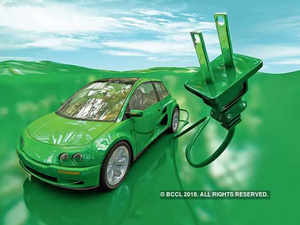 Automobile manufacturers will face challenges surfacing from supply shortages of natural resources for battery production as they move to electrify their fleet in line with government mandate to reduce carbon dioxide emissions, according to a recent report produced by independent research organization A.T. Kearney Energy Transition Institute.
Automobile manufacturers will face challenges surfacing from supply shortages of natural resources for battery production as they move to electrify their fleet in line with government mandate to reduce carbon dioxide emissions, according to a recent report produced by independent research organization A.T. Kearney Energy Transition Institute.
In the Indian context Abhishek Poddar, Partner, Energy & Process Industries, AT Kearney India said, “It is critical that India takes into account the practical aspects related to EV rollout, as it defines its long-term strategy for the sector. The problem is further complicated by the fact that we have limited availability of the natural resources required for LIB battery manufacturing.”
Taking cognisance of these issues, the Government of India, in the latest automotive policy has focused on overall pollution reduction through multiple technologies and regulations by implementing stiff targets, and by not demanding 100% switch to EV by 2030.
“Electric car batteries rely on a host of rare materials —from lithium and nickel to cobalt. Battery makers around the world are struggling to secure supplies of these key ingredients as demand outstrips supply. This undoubtedly places pressure on carmakers, so the hunt for alternative technologies is on,” explained Romain Debarre, managing director, A.T. Kearney Energy Transition Institute.
Cobalt, the report held, is in particularly short supply globally and reserves could be depleted completely by the time 300 million EVs are produced —a modest proportion compared to the 1.2 billion cars on roads today. In addition, global lithium production has risen 7% a year since 2018, but to keep up with demand, miners need to accelerate production to more than 9% a year. Rising demand and tight supplies have also led to price increases.
“The challenging natural resource shortage is further exacerbated by a lack of viable and cost-effective reuse and recycling options for electric car batteries,” Romain added. “By 2025, the economics of recycling is likely to improve as used batteries become more commonplace and second-hand batteries take root.”
The report held that stakeholders need to look at the holistic life-cycle management of electric vehicles to ensure the desired reduction of CO2 footprint is indeed achieved. This will require nations to consider which energy sources are used to charge electric car batteries.
